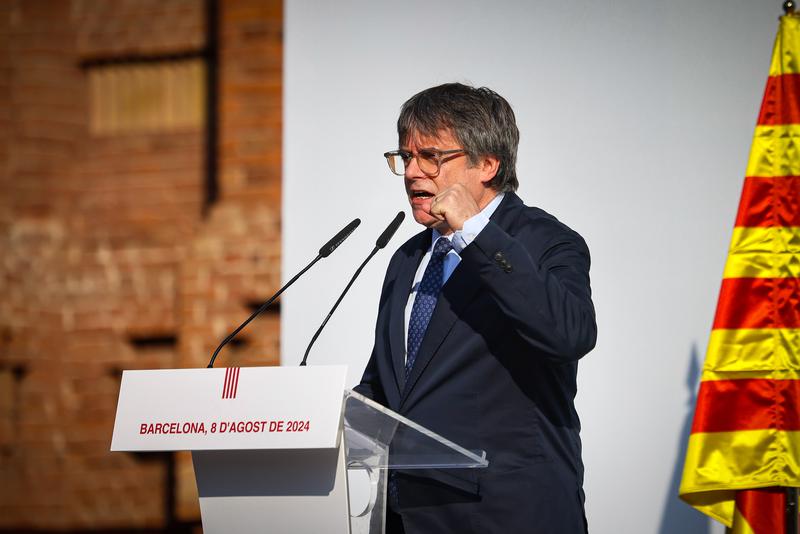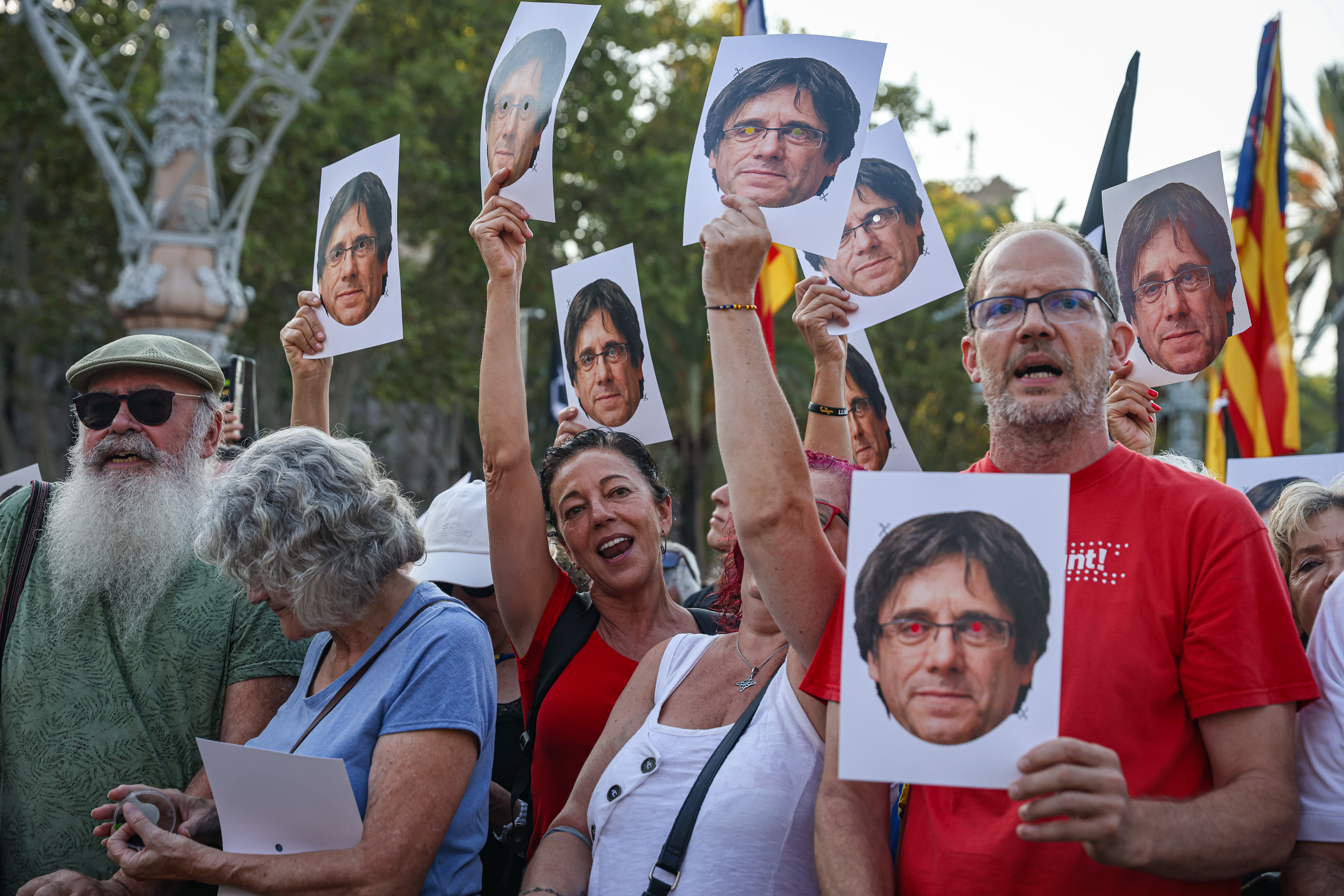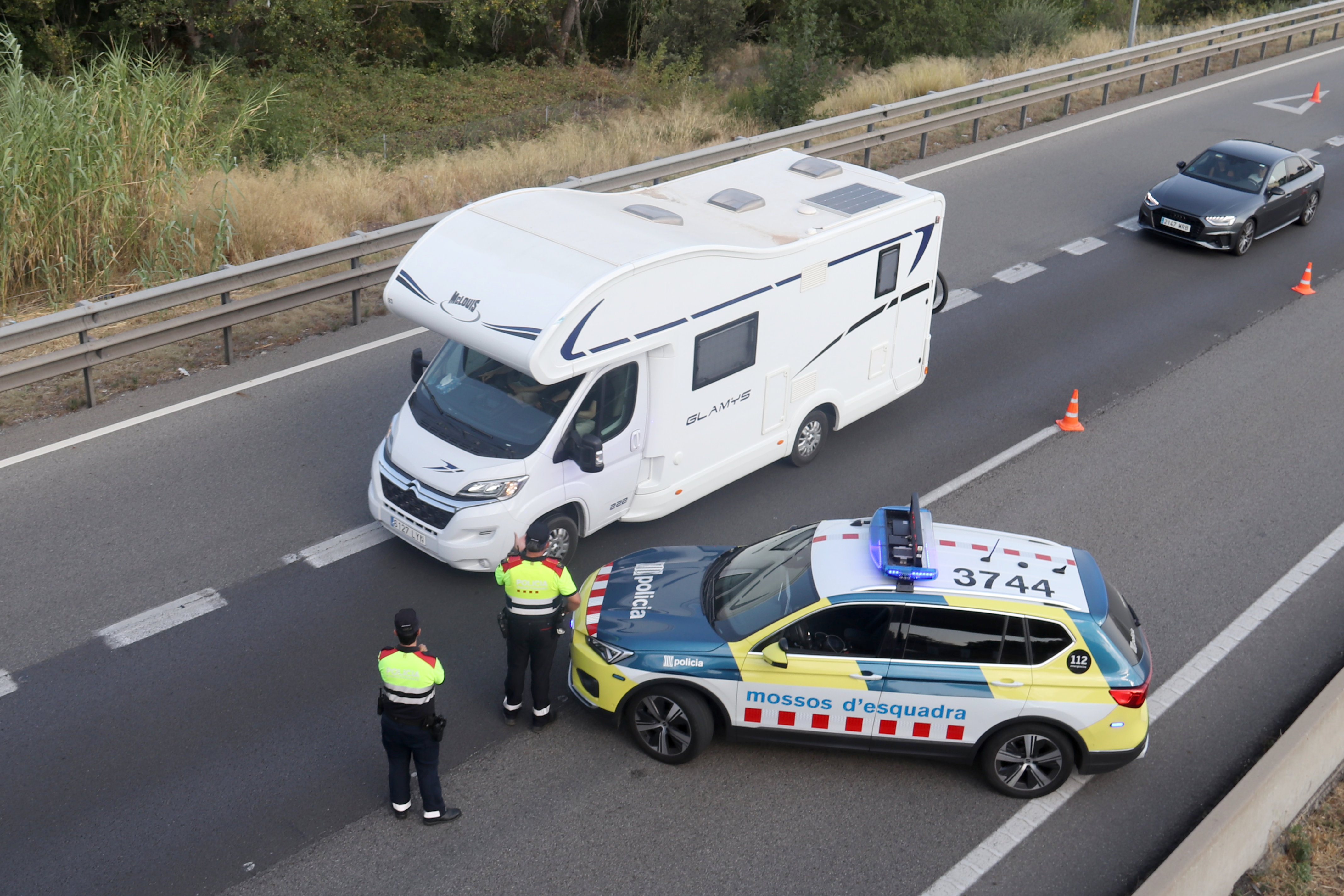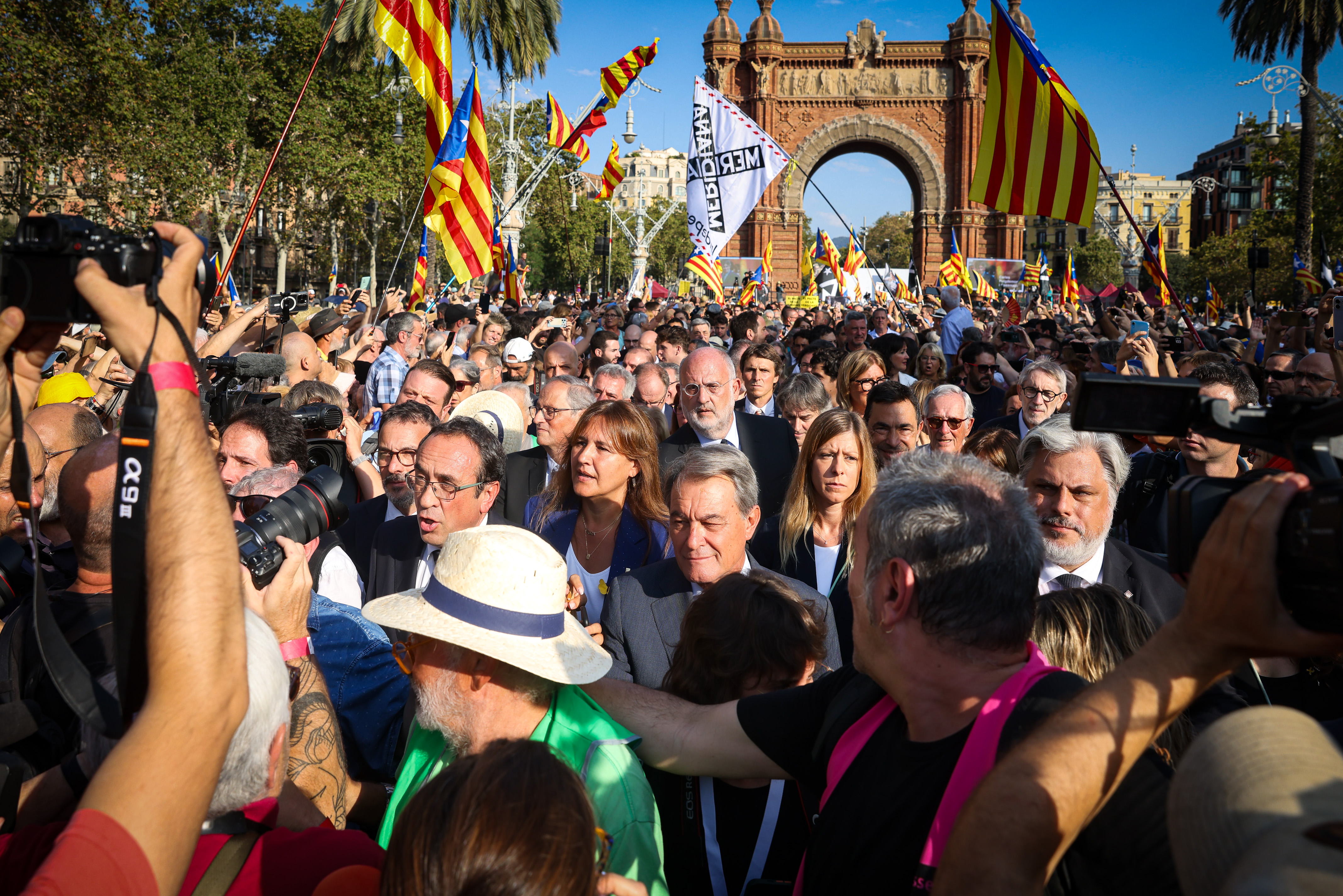Catalan police acknowledge 'mistakes' in Puigdemont arrest plan
Mossos d'Esquadra admit wrongdoing in text sent to Spanish Supreme Court judge

Former Catalan president Carles Puigdemont returned to Barcelona after seven years, spoke for around five minutes, and left again despite having an arrest warrant.
And while Puigdemont, still wanted for his involvement in the 2017 independence referendum, spoke to thousands of supporters on August 8 in Barcelona, hundreds of police officers awaited to detain him. However, he fled the Arc del Triomf area where a stage was set up for him and a couple of days later, he was already back in Waterloo, Belgium, without being arrested.
The Catalan police, Mossos d'Esquadra, in charge of detaining the former president, has now acknowledged that "mistakes" were made in the arrest plan.
Agents admit wrongdoing in a text sent to the Spanish Supreme Court judge, Pablo Llarena, as first reported by the Spanish newspaper El Confidencial and later confirmed by the Catalan News Agency (ACN).
Puigdemont returned to Catalonia for the first time in seven years, coinciding with Socialist Salvador Illa's investiture debate. He spoke to around 3,500 supporters and later disappeared.

On August 9, Llarena asked for reports on Puigdemont's "failed" arrest despite there being hundreds of officers present.
Llarena questioned the plans ahead of the president's return and the decisions taken after the former president's speech and his disappearance. Puigdemont had, at the beginning, said he would be in the chamber, but later changed his plans.
Mossos d'Esquadra say they did not take into account the possibility of Puigdemont leaving after his speech and that the drone they were using was following the group of people heading to the Catalan parliament—a group organizers said Puigdemont would be in. However, he used the distraction to flee the area in a white car.
"It escapes all rational and political logic," the text reads and that he got away because of the situation of "uncertainty" seen at the time of the events. They did not expect such outcome based on the "context and available information" at the time.
"The potential arrest was planned based on basic police criteria based on opportunity and proportionality," the text reads.
Lack of signal
While the drone was following the main politicians headed to the Catalan parliament, Puigdemont escaped, but that was only visible to one law enforcement agent who tried to get in touch with their superiors but was not able to get through the radio.
Puigdemont had hopped on a white car "driven by a woman" with a baseball cap and no suit jacket.

And while Mossos were looking for Puigdemont somewhere else, the only agent tried to run behind a white car, which escaped when a traffic light went green.
Due to the situation, he had wrongly reported on the vehicle's model and the car plate, which was not 100% confirmed. He said it was a Peugeot when, in reality, it was a Honda HRV.
"The information was reported to the coordination center to look for a white Peugeot with those three letters, with this car not being located," the text reads.
Help to Mossos
The Spanish interior ministry had already announced they had offered Mossos d'Esquadra support from the Spanish law enforcement agencies to arrest Puigdemont, but Mossos did not need it.
After Puigdemont's escape, the ministry increased police patrols in road borders, airports, and ports.
Three Mossos d'Esquadra police officers were arrested for allegedly collaborating in his escape from Catalonia.
Two scenarios
Mossos d'Esquadra had planned two different scenarios to arrest Puigdemont. The first one was for the politician to enter the parliament days earlier than the actual investiture debate, and a second one with him trying to enter it on the same day.
One of the major fears was when Parliament speaker Josep Rull did not allow Mossos d'Esquadra to check the chamber on August 7, a day before the debate.

Meanwhile, police report that the pro-independence groups demonstrating on that day were a "high" threat, while those unionist groups were considered "moderate."
If the detention had taken place, there were "three exits" and "different routes" to bring Puigdemont to court in Barcelona's Ciutat de la Justícia. Or even taking him to Madrid to face the Supreme Court.
Why would Puigdemont have been arrested?
On June 11, the amnesty law was published in Spain's Official Gazette (BOE) officially coming into effect.
Since then, more than 80 people have benefited from it, but not Carles Puigdemont.
The law granted amnesty for the crime of disobedience for which the independence leaders were convicted, but Spain's Supreme Court ruled that the crime of misuse of public funds is not included in the amnesty law for the Catalan pro-independence movement.
As a result, arrest warrants are still in force for former president Carles Puigdemont, along with other exiled pro-independence leaders Toni Comín and Lluis Puig.
In addition, Carles Puigdemont is also investigated for the alleged Russian plot to support Catalan independence, the Volhov case. The judge in this case refused to grant amnesty to Puigdemont.